Feature
- VISIT YAMAGATA
- Feature
- [Activity] Nagase Tobo Kiln! Come make pottery in Yamadera
[Activity] Nagase Tobo Kiln! Come make pottery in Yamadera
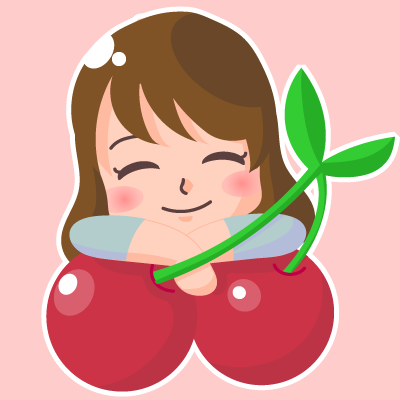
-
Hoshi Mama
I moved to Yamagata with my family on the occasion of the U-turn of my husband (coming back to work to Yamagata where he is from). I was fascinated by the people, nature and food in Yamagata, and now I am totally captivated. I will do my best to let many people outside the prefecture know the charms of Yamagata! Also, I am also running a personal blog named Yamagata Kurashi (https://fullpokko.com/) with the theme o Enrich your life in Yamagata. I will continue to share information on Yamagata from various angles in the future.
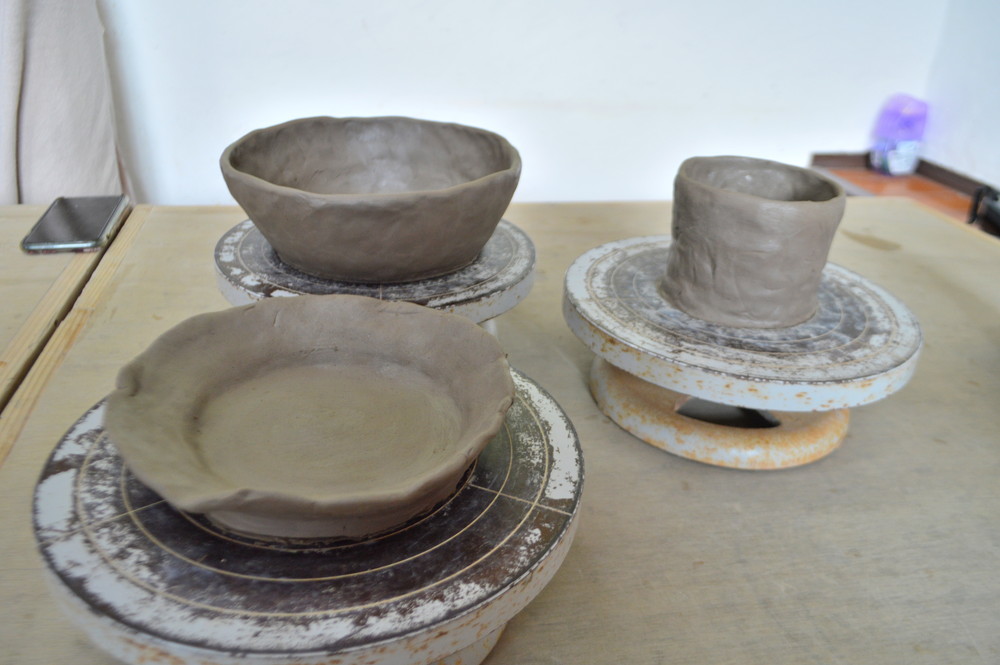
Yamadera is one of the leading tourist destinations in Yamagata prefecture.
At the popular Yamadera Yaki Nagase Tobo kiln near the entrance of the mountain trail up the temple you can try making pottery with a hand-cranked potter’s wheel. It is lots of fun!
1. Nagase Kobo Kiln

Yamadera is one of the leading tourist destinations in Yamagata prefecture.
The shop near the entrance of the mountain trail is the Yamadera Yaki Nagase Tobo Kiln.
Mr. Nagase, the owner, originally worked as a securities man in the Tokyo foreign exchange market. After that, he decided to return to Yamagata and trained at various kilns, and in 1988 he built the current Yamadera Yaki Nagase Kobo Kiln.
The secret of Yamadera-yaki, which creates a unique world view, lies in “earth” and “glaze.”
The earth is from the remains of the Ohanayama burial mound in the northern part of Yamagata City while the glaze is from ashed cherry trees. These two elements define the original Yamadera-yaki style of pottery.
The works lined up in the store are all beautifully shaped and colored.
A unique world view that can be dyed in both Japanese and Western styles is spreading.
2. Prime location in Yamadera
The first thing that surprised me during this interview was the location of Nagase Tobo.
Please see here!

This large wooden building that towers in the back is the Konponchudo Hall, a nationally designated important cultural property.
It is located up the stairs at the start of the climb which can be said to be the entrance to Yamadera.
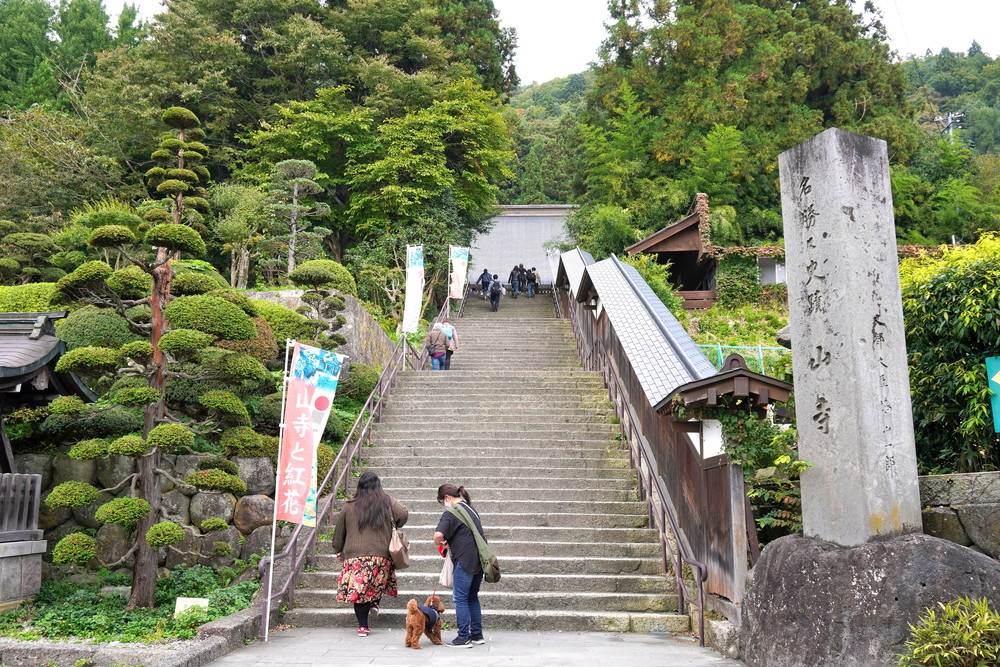
The Nagase Tobo kiln is on the side of the stairs!
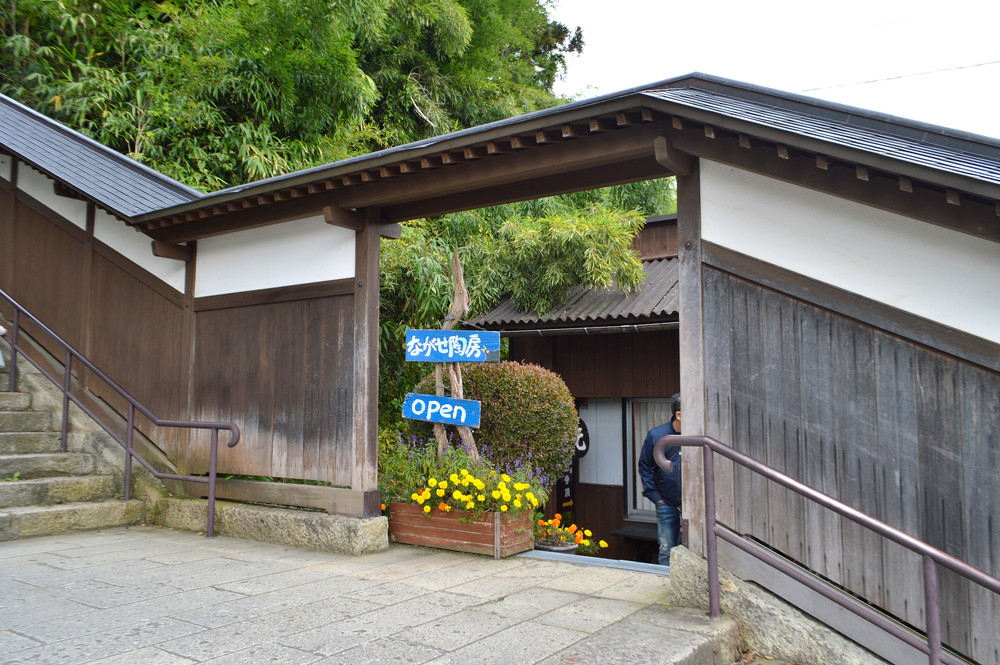
I didn’t know that the entrance was in the middle of the stairs, so I searched around for a while and finally I called the kiln for directions (> _ <)
3. Hand-made pottery
The Nagase Kobo kiln offers ceramic art classes in which children can also participate so I came with my 4 and 5 year old sons!
This time, we will mainly report on the experiences of children.
① Reception
First of all, please tell the name of the person who made the reservation at the counter at the back of the entrance.
* You may be able to experience it without making a reservation, but it is recommended that you make one because the number of openings is limited due to COVID-19.
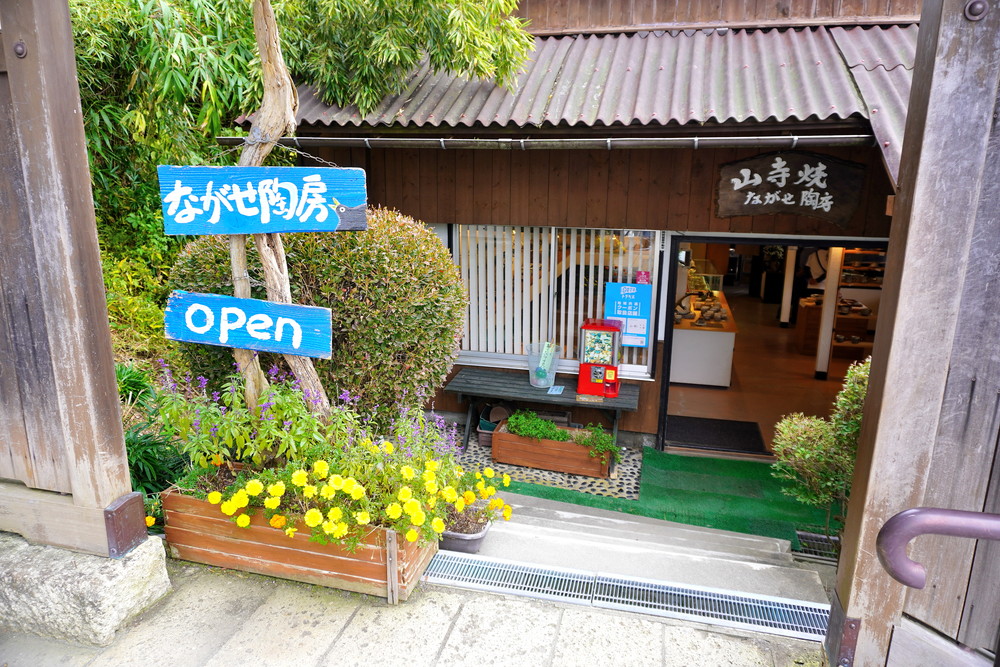
When the reception is complete, you will be guided to the classroom at the back so you can sit in your favorite vacant seat.

There is a sofa in the corner of the room, so please put your luggage there.
Please keep your valuables with you to prevent troubles (^-^)
② Fee and clay
Click here for the price of the ceramic art experience at Nagase Kobo kiln.
[Fee]
・ Adult: 2,200 yen ・ Child: 1,100 yen (elementary school students and younger)

Even beginners can feel free to participate in the pottery experience.
This was my first experience, but thanks to Mr. Nagase’s repeated advice, I was able to create something far better than I had expected.
My kids too were also very satisfied with Mr. Nagase’s advice (^-^)
The amount of clay used in the pottery experience is 1 kg for the adults and 500 g for the children, which is just the right size.
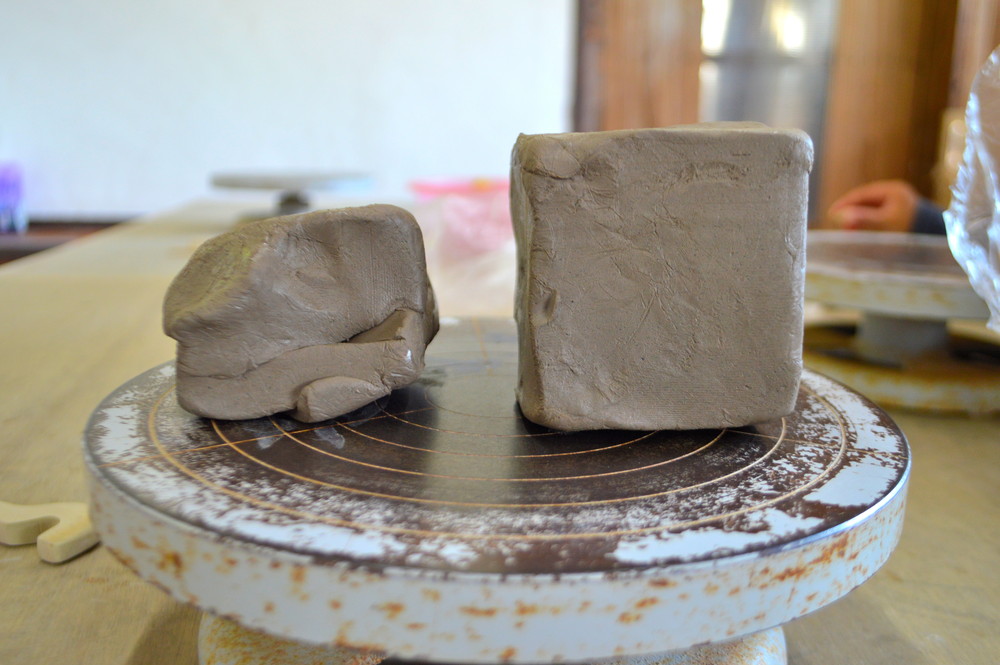
* Clay is contained in a bag to prevent it from drying out. I took it out just for the pictures.
③ Explanations
First, Mr. Nagase gave a brief explanation.
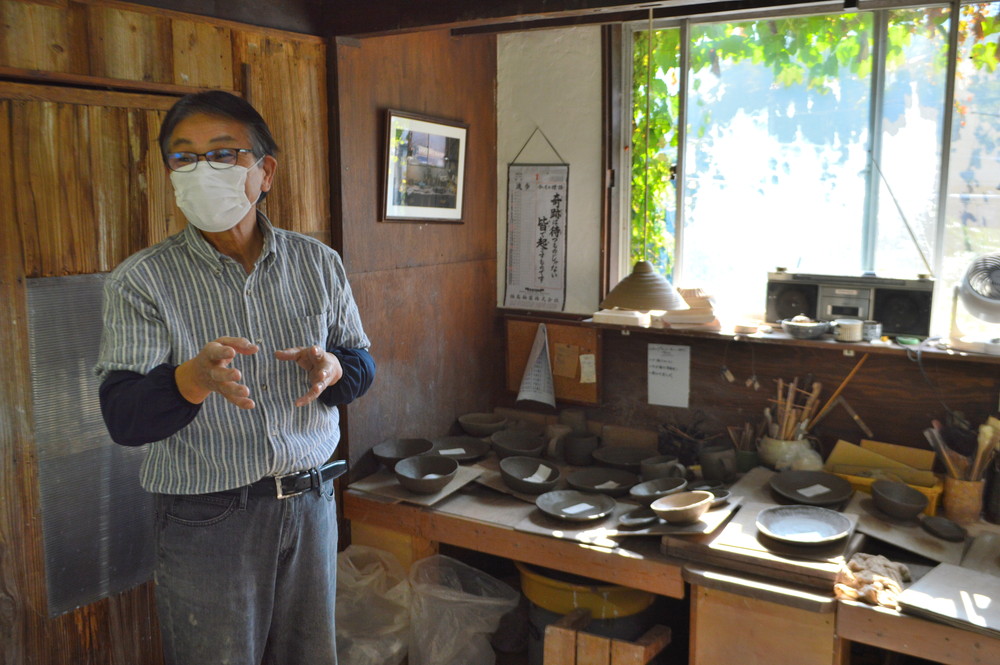
There are some notes, so listen carefully.
Tools that I have never seen are lined up on the desk.
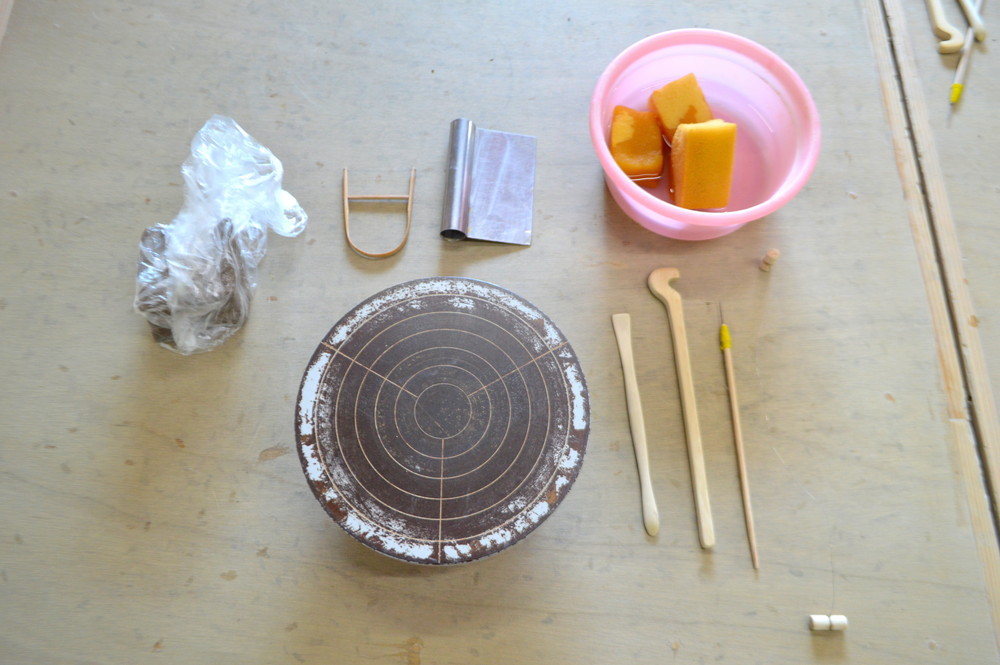
I’m worried if I can use all of this properly (^^;)
But it’s okay!
There is an overall explanation for each process, and each person will be followed and instructed by Mr. Nagase during the workshop.
He explained the whole process while working with the children, using the children’s works as a model.
With this timing, the children’s works also benefited from such advice (^-^)
④ Making ceramic
The ceramic art class has finally started!
This time, my oldest (5 years old) made a plate, his brother (4 years old) a mug, and I’m trying to make a salad bowl!
First of all, the clay in the bag is struck on the desk as to soften it.
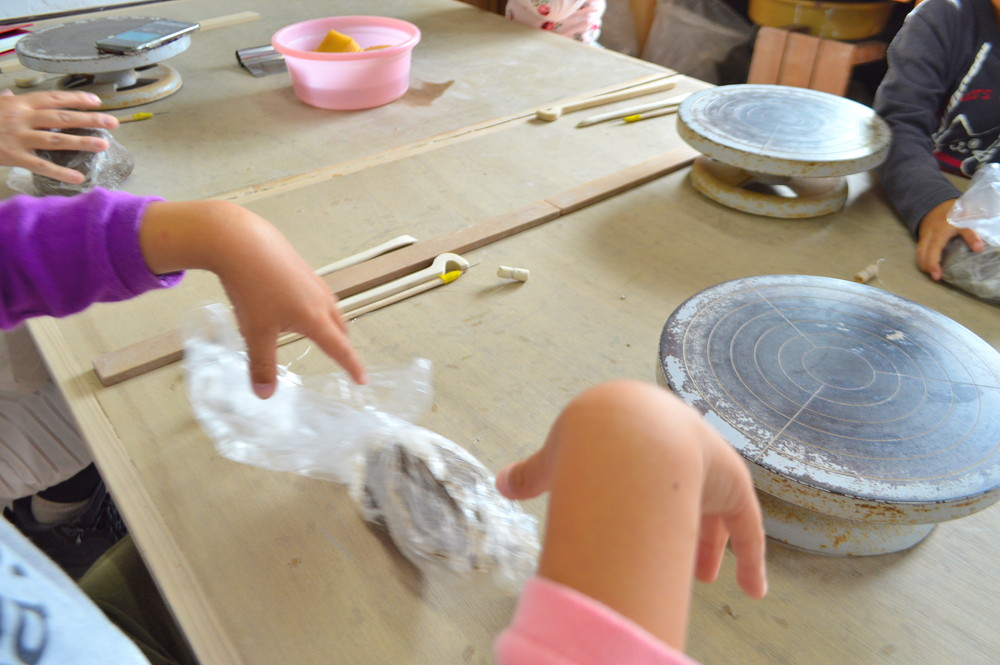
At first, the children were reluctant to throw it.
Mr. Nagase said “You can throw more” so I laughed and started slamming it as hard as I could (It was a great stress reliever).
Next, we cut the softened clay in half with a tool and stretch it on the potter’s wheel.

Mr. Nagase is showing my youngest son.
(The other half of the clay was put back in the plastic bag to prevent it from drying out.)
When it expends to a certain extent, we use a needle to cut the excess clay and turn the potter’s wheel to make a round shape.
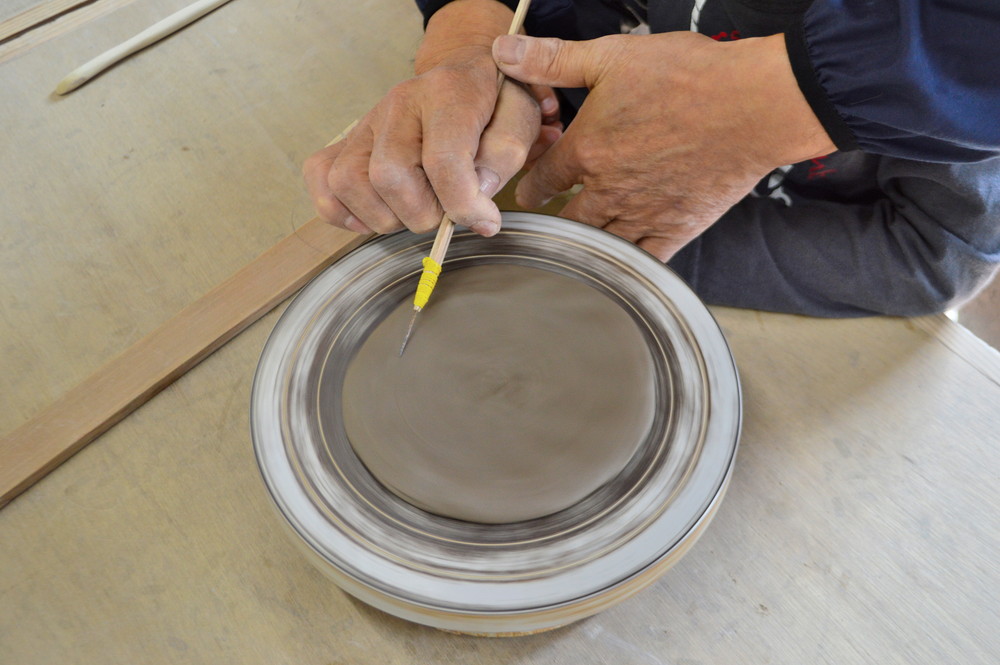
It’s a little difficult here, so I worked with Dr. Nagase (^-^)
I will make the surrounding wall using the other half of the clay.

Mr. Nagase will guide you to the point where even children can work, so the children were silently absorbed in the work.
Fine-tuning the wall with my eldest son …
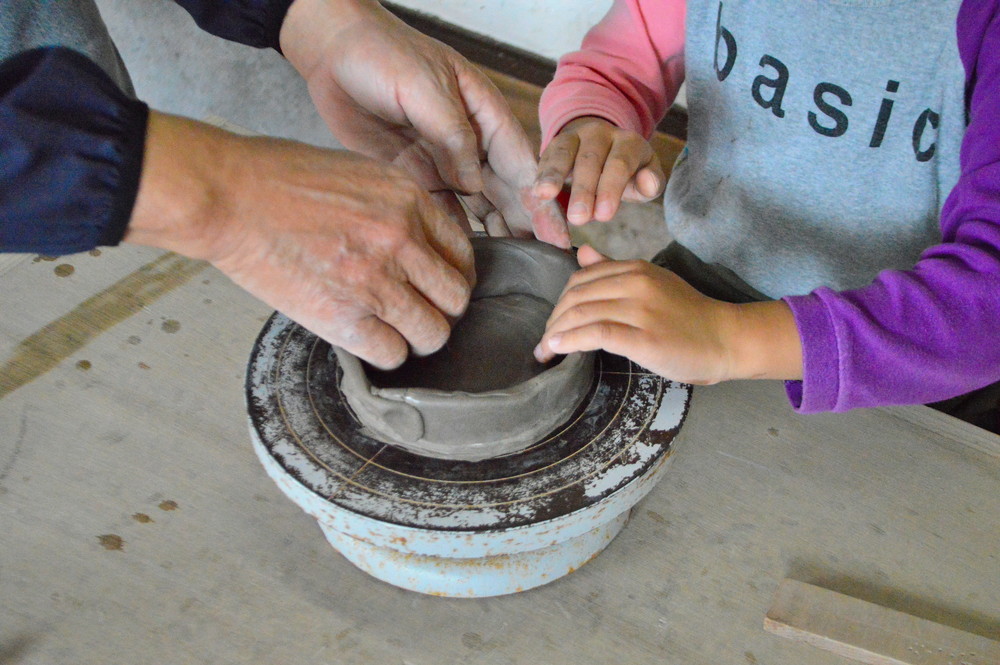
My second son attaches the handle of the mug and faces the final challenge, the detachment task!
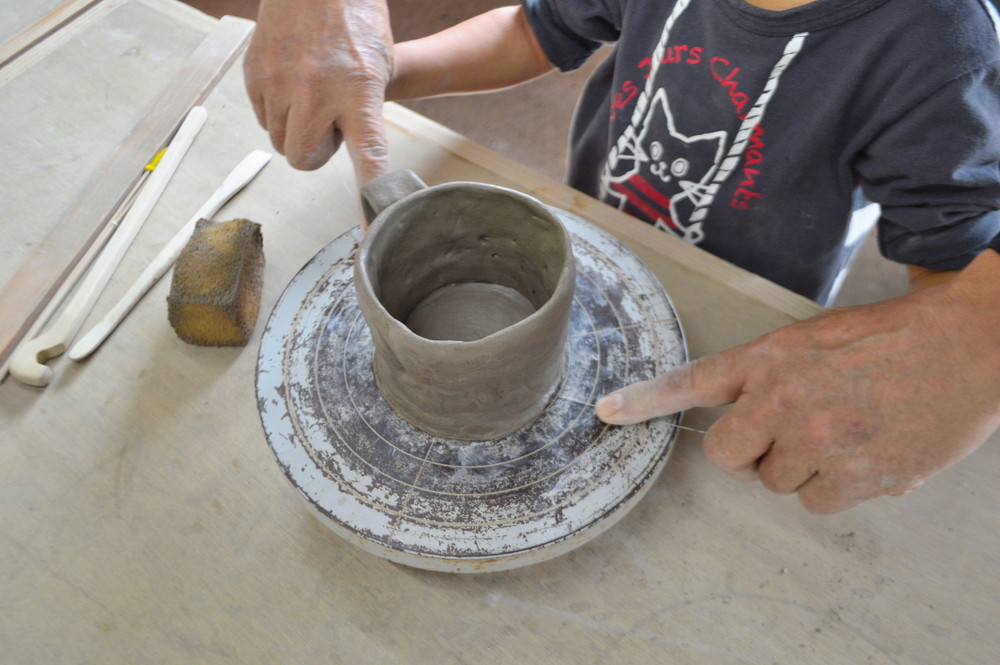
Together with Mr. Nagase, it was a success to separate from “Sweee”!
It felt good and I almost cried (^^;)
Here is the completed work!

On the left is my eldest son’s plate, on the right is my second son’s mug, and in the back is my salad bowl.
Time required was about 1 hour and 30 minutes.
I was so proud of my kids’ works (≧-≦).
This will be a good memory.
By the way, the finished product seems to shrink by about 20% from this state, so the point is to make it a little larger.
In addition, it will be completed in 1 to 2 months because it will be dried and fired.
There is a charge for mailing, but it is free for direct pick-up.
It’s good to go sightseeing and visit Yamadera again (^^)
By the way, this time there were two other groups beside us but Mr. Nagase has a lot of experience.
There were no particular problems, and everyone seemed to be making a satisfying work.
Mr. Nagase, who explains happily with a smile from beginning to end, has a really wonderful personality (≧-≦)
It is understandable that the reviews of the participants are high (^-^)
⑤ Five colors after firing
You can choose from five colors for the finished product.
From top left, cream, blue, brown, green, and white.
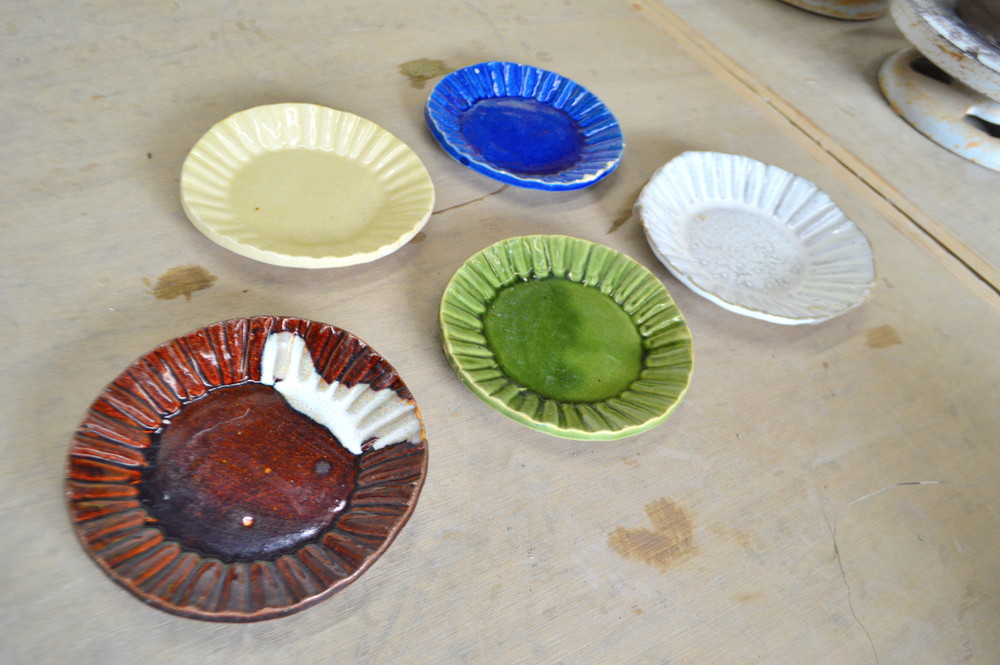
In addition, one-point decoration is possible for brown and cream.
* The pattern will be left to the shop.
For brown, you can choose from only white, and for cream, you can choose from three colors.
In the case of a cup, you can choose the color inside and outside, so please think about your favorite color (^-^)
⑥ The teacher will take a picture with the participants’ smartphones and cameras.
If you put your smartphone on the work table, Mr. Nagase will take a picture of you while working.
When I’m working on my own, I think it’s difficult to shoot because of mud on my hands and concentration.
Why don’t you leave it in your photo for a wonderful moment (^-^)
4. Finished product
Approximately two months after the hands-on classroom, I was informed that the work was done so I visited the pottery again (^-^)
Here are our finished items!
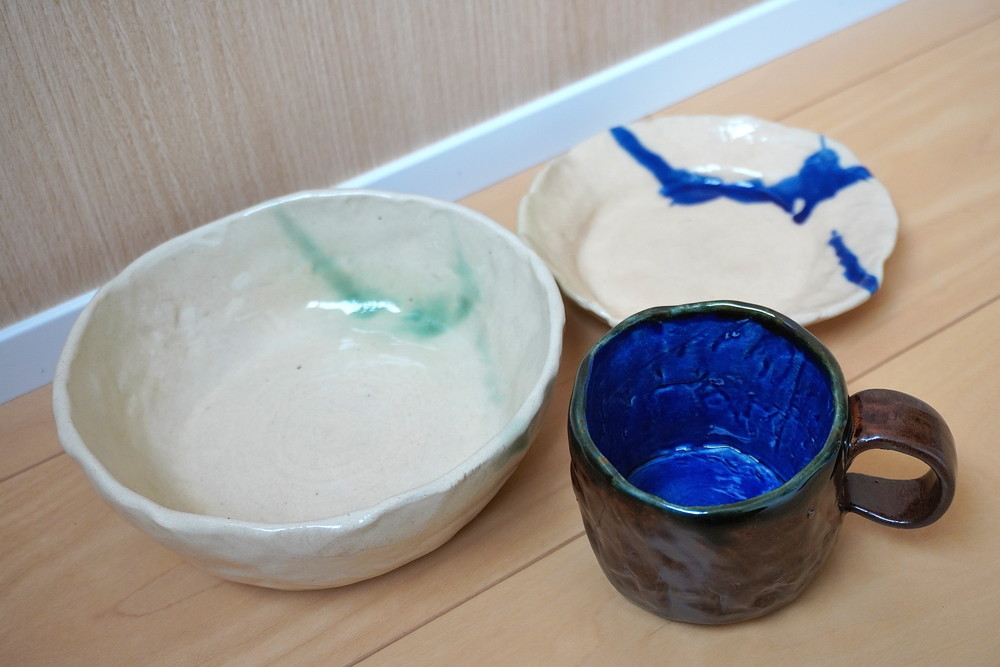
Somehow, it came out much better than I expected (≧-≦)
The size is perfect, and the firing shrinks the items by 20 to 30% (^-^)
The colors are really vibrant and the understated patterns give an impressive accent.
Perhaps the children were very happy with the plates and mugs they made, and they love their works every day (morning and night).
* It’s scary to imagine when it’s broken (^^;)
“Let’s go make it again! What should we make this time?”
While smiling with them, I was expanding my dreams.
This experience class is really recommended (^-^)
5. Yamadera-yaki ware
Various kinds of colorful works are lined up in the Nagase Kobo kiln shop.
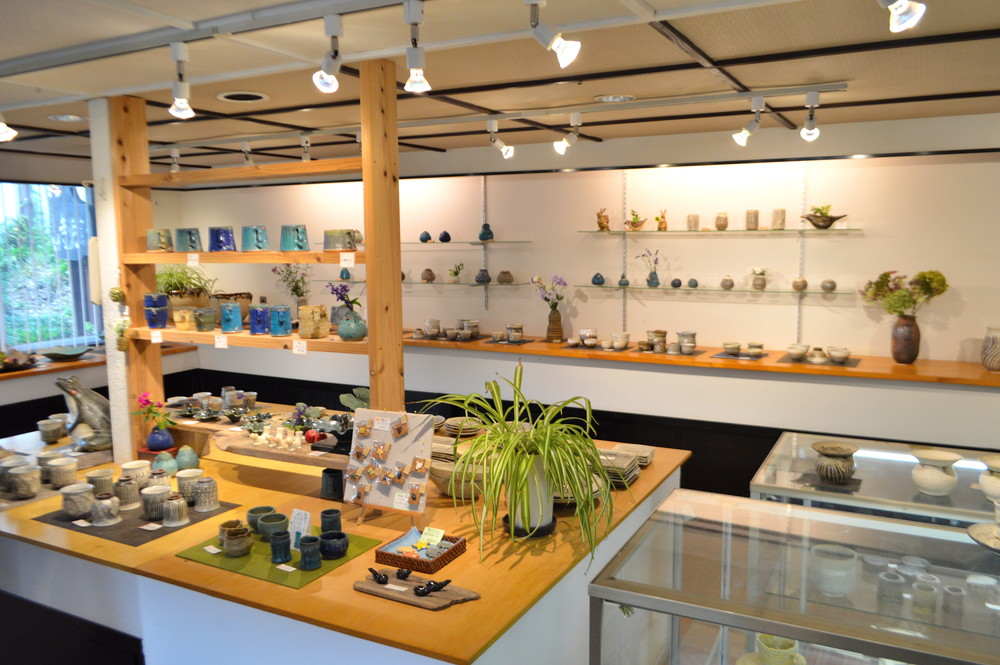
There are many works that you can enjoy just by looking at them, so please stop by.

6. Nagase Kobo Kiln Access
Access to the parking lot of Nagase Kobo kiln:
First, head east on the street with the stairs leading up the mountain.
Look for the sign for the parking lot and turn left.
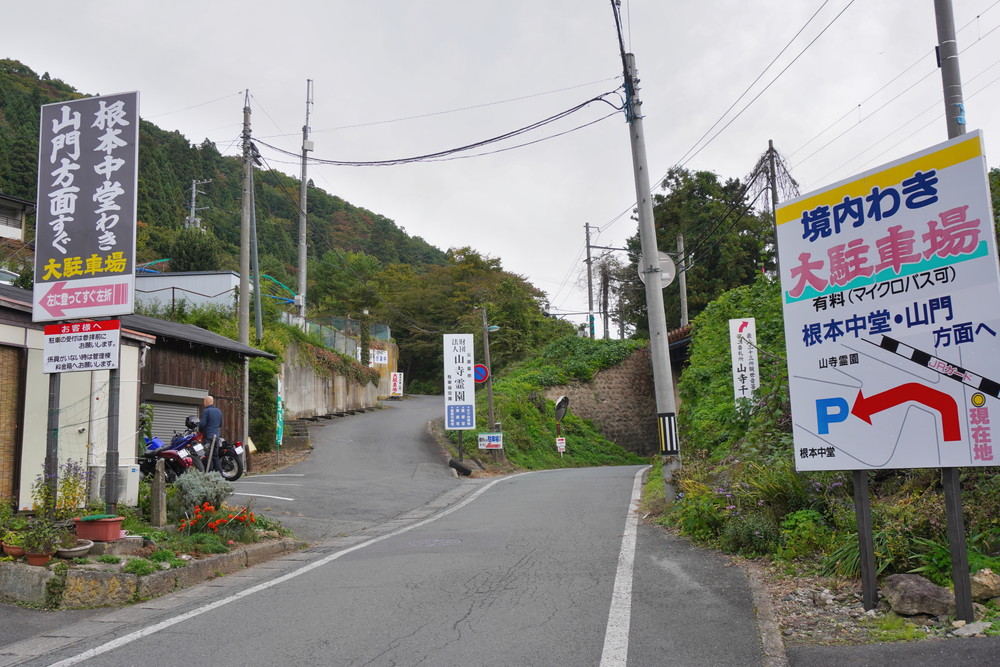
After about 50 meters, you will see a T-junction and turn left again.
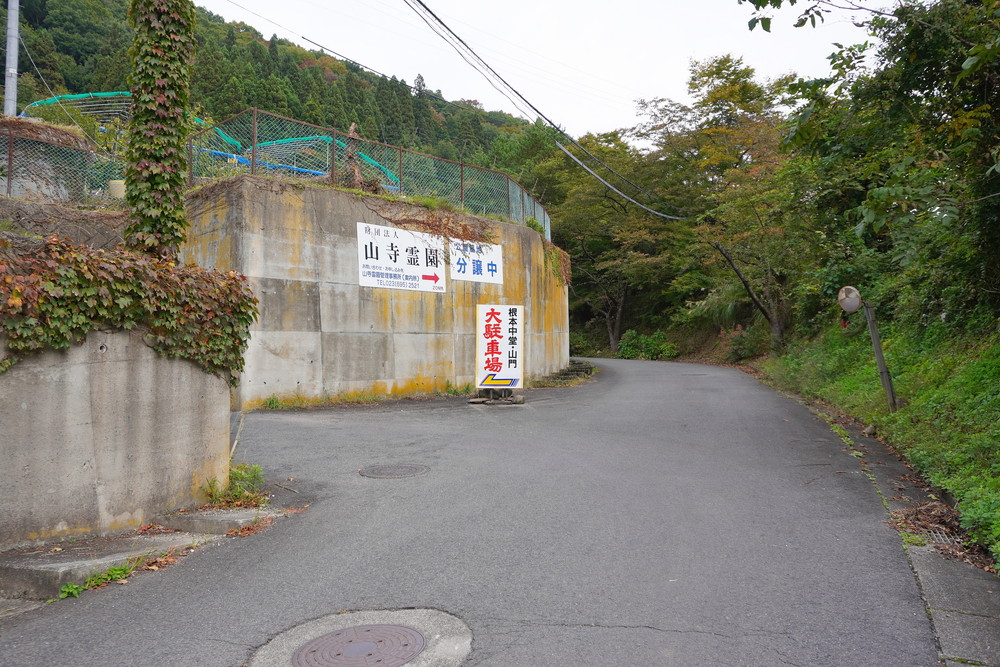
After turning left, the Parking space on your left will be the Parking Lot of Nagase Pottery.

Please park behind or next to the white car in the photo above
(Please note that the spots indicated “1” and “2” are not the parking lots dedicated for Nagase Kobo kiln visitors.
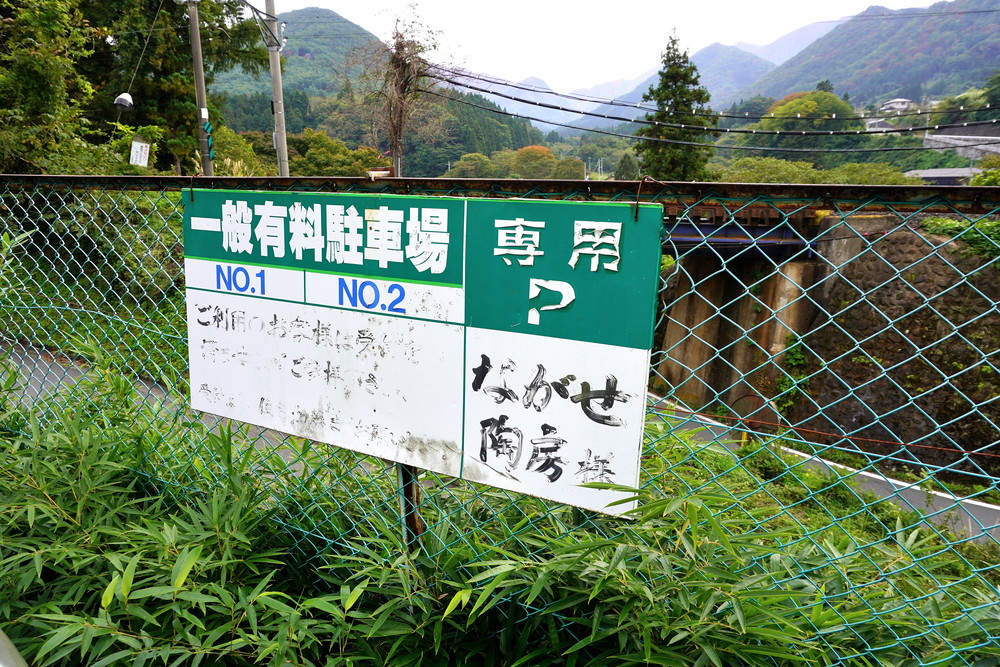
This is the parking lot for those who come to the pottery class, but if it is full, please contact Nagase Kobo kiln (023-695-2015).
The road to the parking lot also has steep slopes.
Be careful when parking not to bump you car.
7. Message from Mr. Nagase
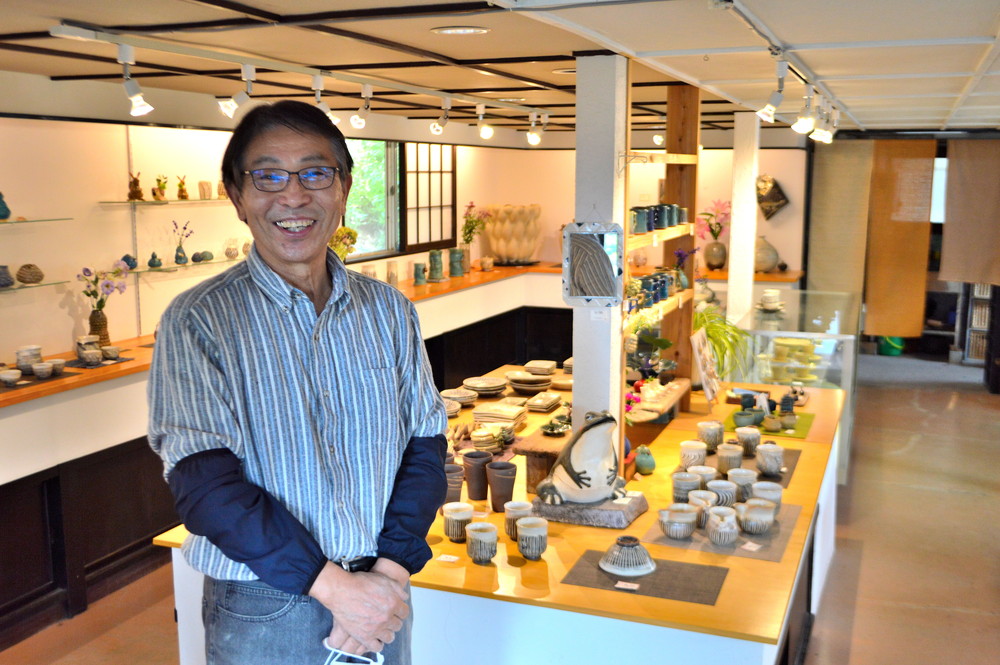
Finally, I received a message from Mr. Nagase.
“I would like to provide time for everyone to enjoy pottery.
You can also just come to have look at the works, so please come visit us. “
I would like to invite my family to participate in the pottery class at Nagase Kobo kiln!
8. Click here to make a reservation to a ceramic art class
If you are interested, why not give it a try?
* You can also use Go To Travel regional coupons.
Detailed information
![[Activity] Nagase Tobo Kiln! Come make pottery in Yamadera](https://www.visityamagata.jp/wp/wp-content/uploads/2020/10/ながせ陶房-体験.jpeg)
-
[Activity] Nagase Tobo Kiln! Come make pottery in Yamadera
* Please cooperate in wearing a mask to prevent COVID-19 infection.

![[Feature] Pino Collina Matsugaoka! Winery & Restaurant in Shonai](https://www.visityamagata.jp/wp/wp-content/uploads/2024/06/pinocollina.jpg)
![[Feature] Sahato Benihana! Enjoy the starry sky at the prefecture’s largest planetarium](https://www.visityamagata.jp/wp/wp-content/uploads/2024/07/sahato.jpg)
![[Summary] Safflower Festival 2024! Discover Yamagata’s prefectural flower](https://www.visityamagata.jp/wp/wp-content/uploads/2021/06/紅花①.jpg)
![[Feature] Miraini! Sakata Activity Hub](https://www.visityamagata.jp/wp/wp-content/uploads/2024/02/compile-image_1707742235039.png)
![[Feature] Yukotto! Refreshing time in hot springs](https://www.visityamagata.jp/wp/wp-content/uploads/2024/03/yukotto.jpg)